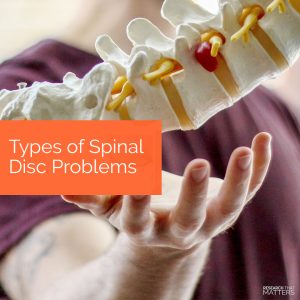PBA Tip of the Day brought to you by Dr Jessica Turner with Pure Health and Wellness.
If you’ve had a spinal disc problem, you know how painful it can be.
Every movement seems to hurt, and it can feel like you’ll never be back to your old self.
That pain is the body’s way of signaling you to “Pay Attention Inside Now” — it’s a warning sign from your body. It’s your body’s way of letting you know it’s been pushed past its limits.
However, with the proper care and a little time, you can get your life back.
The most common type of spinal disc problem is called a bulge or herniation, and these injuries most commonly occur between 45-65 years of age when discs are naturally more dehydrated and stiffer.
A disc bulge or herniation occurs when a disc’s inner portion is trying to (or has) pushed through its tough outer layer.
When this happens, it can cause pain in two different ways.
If the disc bulges far enough to press on a spinal nerve, you may notice pain that travels down your arms or legs.
If the inside of your disc pushes through the outer layer, it could also cause severe inflammation resulting in pain.
The good news is that your spine is incredibly resilient.
Research has proven that movement-based care, such as spinal adjustments and spinal rehab, are incredibly effective at helping you heal from spinal disc injuries. In fact, exercises that “centralize” your spinal disc may be able to prevent future episodes of sciatica.
If you have spinal pain or pain that travels down your arm or leg, let us know. Our practice focuses on using the latest research-based treatments to help you heal, improve, and regain your quality of life.
Science Source(s):
Bulging Disc vs. Herniated Disc: What’s the Difference? Mayo Clinic. 2019.
Exercise for Sciatica from a Herniated Disc. Spine-Health. 2019.












